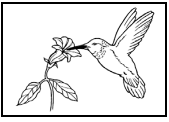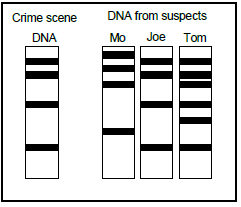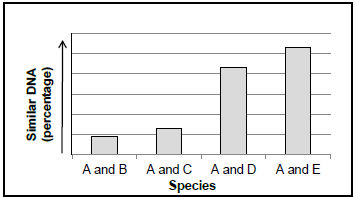LIFE SCIENCES PAPER 2 GRADE 12 QUESTIONS - NSC PAST PAERS AND MEMOS NOVEMBER 2016
Share via Whatsapp Join our WhatsApp Group Join our Telegram GroupLIFE SCIENCES PAPER 2
GRADE 12
NATIONAL SENIOR CERTIFICATE
NOVEMBER 2016
INSTRUCTIONS AND INFORMATION
Read the following instructions carefully before answering the questions.
- Answer ALL the questions.
- Write ALL the answers in the ANSWER BOOK.
- Start the answers to EACH question at the top of a NEW page.
- Number the answers correctly according to the numbering system used in this question paper.
- Present your answers according to the instructions of each question.
- Make ALL drawings in pencil and label them in blue or black ink.
- Draw diagrams, tables or flow charts only when asked to do so.
- The diagrams in this question paper are NOT necessarily drawn to scale.
- Do NOT use graph paper.
- You must use a non-programmable calculator, protractor and a compass, where necessary.
- Write neatly and legibly.
SECTION A
QUESTION 1
1.1
Various options are provided as possible answers to the following questions. Write down the question number (1.1.1 to 1.1.9), choose the answer and make a cross (X) over the letter (A to D) of your choice in the ANSWER BOOK.
EXAMPLE:![]()
1.1.1 The theory of evolution by natural selection was first described by …
- Gregor Mendel.
- Watson and Crick.
- Jean Baptiste de Lamarck.
- Charles Darwin.
1.1.2 When an individual that is homozygous dominant for a particular characteristic is crossed with an individual that is homozygous recessive for the characteristic, all the offspring would be ...
- homozygous dominant.
- homozygous recessive.
- heterozygous.
- pure-bred.
1.1.3 The absence of the protein melanin results in the disorder called …
- haemophilia.
- colour-blindness.
- albinism.
- Down syndrome.
1.1.4 A hummingbird uses its long beak to feed on the nectar in flowers. The reason that Lamarck would have provided for the long beak of the hummingbird is that …

- all hummingbirds have the same beak length.
- there is natural variation in beak length and some birds are therefore better suited to feed on nectar.
- the more the hummingbird used its beak, the longer it grew.
- hummingbirds with shorter beaks were more fit for survival.
QUESTIONS 1.1.5 TO 1.1.7 ARE BASED ON THE DIAGRAM BELOW, SHOWING THE RESULTS OF A PARTICULAR PROCEDURE.

1.1.5 The procedure shown above is called …
- cloning.
- DNA replication.
- DNA profiling.
- fingerprinting.
1.1.6 The evidence in the diagram shows that …
- only Tom was present at the scene of the crime.
- Tom and Joe were present at the scene of the crime.
- only Mo was present at the scene of the crime.
- none of the three individuals were at the scene of the crime.
1.1.7 Below is a list of possible uses of the procedure shown in the diagram above:
- Paternity testing
- Matching of tissues for organ transplants
- Identification from fingerprints
- Screening for genetic disorders
Which combination shows the CORRECT uses of the procedure?
- (i), (ii), (iii) and (iv)
- Only (i), (ii) and (iv)
- Only (i), (ii) and (iii)
- Only (i) and (iv)
QUESTIONS 1.1.8 AND 1.1.9 ARE BASED ON THE GRAPH BELOW, WHICH SHOWS THE COMPARISON OF DNA BETWEEN SPECIES A AND SPECIES B, C, D AND E.

1.1.8 Which statement is a valid conclusion that can be drawn from this graph?
Species A is most closely related to …
- species B.
- species C.
- species D.
- species E.
1.1.9 The percentage DNA similarities between species could be used to show the following:
- Similarities in protein synthesis
- Evidence for evolution
- Common ancestry
Which combination shows the CORRECT application of the use of similarities in DNA between species?
- (i), (ii) and (iii)
- Only (i) and (ii)
- Only (ii) and (iii)
- Only (i) and (iii) (9 x 2)
(18)
1.2 Give the correct biological term for each of the following descriptions. Write only the term next to the question number (1.2.1 to 1.2.7) in the ANSWER BOOK.
1.2.1 The organelle in the cytoplasm which is the site of protein synthesis
1.2.2 The name of the bond that forms between amino acids in a protein molecule
1.2.3 The process by which a DNA molecule makes identical copies of itself
1.2.4 The name of the process when homologous chromosome pairs fail to separate during meiosis
1.2.5 The permanent disappearance of a species from earth
1.2.6 A testable statement that may be accepted or rejected
1.2.7 The type of nucleic acid that carries a specific amino acid (7 x 1) (7)
1.3 Indicate whether each of the descriptions in COLUMN I applies to A ONLY, B ONLY, BOTH A AND B or NONE of the items in COLUMN II. Write A only, B only, both A and B or none next to the question number (1.3.1 to 1.3.3) in the ANSWER BOOK.
| COLUMN I | COLUMN II |
| 1.3.1 The selection and breeding of organisms with desirable characteristics by humans | A:Natural selection B:Artificial selection |
| 1.3.2 An allele that is not shown/expressed in the phenotype when found in the heterozygous condition | A:Dominant B:Recessive |
| 1.3.3 Pairing of nitrogenous bases | A:DNA B:RNA |
(3 x 2)(6)
1.4 The diagram below shows a part of a DNA molecule.

1.4.1 Provide labels for:
- 1(1)
- 2(1)
- 3(1)
1.4.2 Give the number of nucleotides shown in the diagram. (1)
1.4.3 Give ONE difference between the nitrogenous bases found in DNA molecules and those found in RNA molecules. (2) (6)
1.5 The diagram below represents a process that occurs during meiosis.

1.5.1 Provide labels for:
- A(1)
- B(1)
- D(1)
1.5.2 Give the function of the structure labelled B. (1)
1.5.3 Name:
- The process occurring at C(1)
- The phase in meiosis during which the process at C occurs (1)
1.5.4 State ONE reason why process C is significant. (1) (7)
1.6 The diagram below represents the possible evolution of the horse.

1.6.1 Name the:
- Common ancestor of all horses(1)
- Genus most closely related to Megahippus (1)
1.6.2 When did Paleotherium become extinct?(2)
1.6.3 How long did it take for the modern horse to evolve from Hyracotherium? (2)
(6)
TOTAL SECTION A: 50
SECTION B
QUESTION 2
2.1 The leaf colour in a plant is controlled by two alleles, green (G) and yellow (g). Thorns on plant stems are controlled by two alleles, presence of thorns (T) and no thorns (t).
Two plants with the genotypes GGTT and ggtt were crossed. Their offspring were then left to pollinate each other.
The table below shows the possible genotypes of the offspring of the second generation. Genotypes (i) and (ii) have been left out.
| Gametes | GT | Gt | gT | gt |
| GT | GGTT | GGTt | GgTT | GgTt |
| Gt | GGTt | GGtt | (i)… | Ggtt |
| gT | GgTT | GgTt | ggTT | ggTt |
| gt | GgTt | Ggtt | ggTt | (ii)… |
2.1.1 Give the:
- Genotype of (i)(1)
- Phenotype of (ii)(2)
2.1.2 List the FOUR genotypes of the offspring of the second generation that would be phenotypically different from the original pair of parents. (4) (7)
2.2 The diagram below represents a phase in meiosis.
Cell 1 undergoes division to give rise to cells 2 and 3. Some alleles are indicated by letters.

2.2.1 Explain why cell 1 does NOT belong to a human. (2)
2.2.2 How many chromosomes would be present in:
- Cell 2 at the end of telophase I(1)
- The daughter cells produced by cell 3 after meiosis II (1)
2.2.3 Draw a labelled diagram of a gamete that will result from cell 2. (5) (9)
2.3 State Mendel's law of segregation. (3)
2.4 Huntington's chorea is a disease caused by a gene mutation that results in the degeneration of brain tissue. It is caused by a dominant allele (H).
The pedigree diagram below shows the inheritance of this disorder in a family.

2.4.1 What is:
- Susan's phenotype(1)
- Sarah's genotype (1)
2.4.2 Emma plans to have a baby. What must the father's genotype be so that there is a 50% chance that their child will not have Huntington's chorea? (1)
2.4.3 Explain your answer to QUESTION 2.4.2. (3) (6)
2.5 The mutation that causes Huntington's chorea occurs when the CAG base triplet on the DNA molecule is repeated more than 35 times. This mutation results in the formation of a 'Huntington's protein', which causes the degeneration of neurons in the brain.
The diagram below shows the process whereby an mRNA molecule is formed from the DNA molecule.

2.5.1 Name the process represented in the diagram. (1)
2.5.2 Where in the cell does this process occur? (1)
2.5.3 Give the:
- Complementary bases on DNA strand 2 for a CAG triplet(1)
- Sequence of bases at X (1)
The table below shows the amino acids coded for by mRNA codons.
| mRNA CODON | AMINO ACID |
| UAC | Tyrosine |
| AUG | Methionine |
| CAG | Glutamine |
| GUC | Valine |
2.5.4 Which amino acid will occur more than 35 times in a 'Huntington's protein'? (2)
2.5.5 Explain how a mutation results in the formation of a different protein. (3) (9)
2.6 You have two rose plants, both with pink flowers. You cross them and find that, while most of the offspring are pink, some are red and some are white.
Use a genetic cross to show how breeding two pink flowering plants can result in pink, red and white flowering plants.
Use the letter R for the red allele and W for the white allele. (6)
[40]
QUESTION 3
3.1 Read the passage below.
GENETIC MODIFICATION OF CROPS Genetic modification (GM) of crops began with the discovery that the soil bacterium Agrobacterium could be used to transfer useful genes from unrelated species into plants. |
3.1.1 According to the passage, how did genetic modification of crops begin?(1)
3.1.2 Explain why a plant, which is modified to be weed-killer resistant, could be a problem for farmers.(2)
3.1.3 Give TWO examples in the passage of the use of GM crops that may be a potential threat to human health.(2)(5)
3.2 Lizards of a certain species on an island are usually brown in colour. A mutation in one gene for body colour results in red or black lizards. Black lizards camouflage well against the dark rocks and warm up faster on cold days which will give them energy to avoid predators.
Scientists investigated the relationship between the colour of lizards in a population and their survival rate on an island.
They conducted the investigation as follows:
- They selected a group of lizards of a certain species in a habitat.
- They recorded the percentage of each colour (brown, red or black) in the selected group.
- They repeated the investigation over a period of 30 generations of offspring.
The results of the investigation are shown in the table below.
| COLOUR OF LIZARDS | PERCENTAGE (%) OF EACH COLOUR IN THE POPULATION | |||
| Initial population | 10th generation | 20th generation | 30th generation | |
| BROWN | 80 | 80 | 70 | 40 |
| RED | 10 | 0 | 0 | 0 |
| BLACK | 10 | 20 | 30 | 60 |
3.2.1 State the:
- Independent variable(1)
- Dependent variable (1)
3.2.2 Explain the effect of the mutation on the survival of the red lizards.(2)
3.2.3 Explain why the scientists had to conduct this investigation over 30 generations.(2)
3.2.4 State TWO ways in which the scientists could have improved the validity of the investigation.(2)
3.2.5 Use the theory of natural selection to explain the higher percentage of black lizards in the population of the 30th generation.(6)
3.2.6 Draw a bar graph to compare the percentage of the brown and the black lizards in the initial population and the 30th generation.(6) (20)
3.3 The diagram below shows the distribution of members of the camel family on the different continents. The arrows indicate the current distribution of the animals.

Explain how speciation of camels may have occurred. (6)
3.4 Human blood groups are controlled by multiple alleles.
3.4.1 Name ALL the alleles that control human blood groups.(3)
3.4.2 How many of the alleles named in QUESTION 3.4.1 can any individual inherit?(1)
3.4.3 Give a reason for your answer to QUESTION 3.4.2.(2)
3.4.4 A man has blood group A and his wife has blood group B. Their first child has blood group AB and the second child has blood group O.
What can one conclude about the blood groups of their future children? (3) (9)
[40]
TOTAL SECTION B: 80
SECTION C
QUESTION 4
Fossils of the bipedal primates Ardipithecus, Australopithecus and early Homo species are used to support the 'Out of Africa' hypothesis.
State the 'Out of Africa' hypothesis. Describe the evidence that supports the 'Out of Africa' hypothesis and the evidence that shows that the three primate genera mentioned above, were all bipedal.
Content:(17)
Synthesis:(3)
(20)
NOTE:
NO marks will be awarded for answers in the form of tables, flow charts or diagrams.
TOTAL SECTION C:20
GRAND TOTAL:150